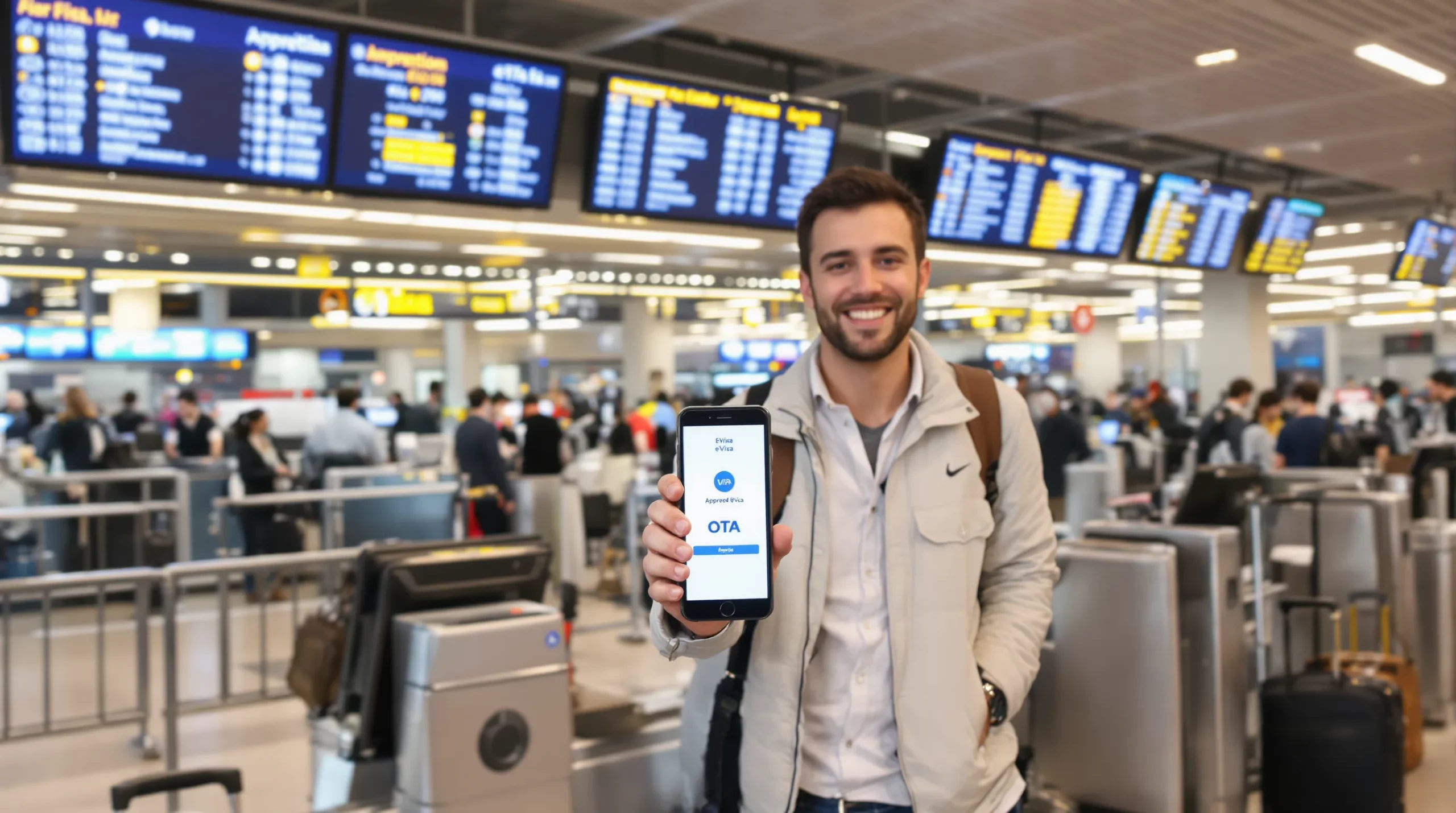Visa Denied? 9 Recovery Strategies Every OTA Should Offer
When “Sorry, Your Visa Was Refused” Pops Up in Your Client’s Inbox
Nothing erodes the excitement of a new booking faster than a visa refusal notice. According to the U.S. State Department, more than one in six non-immigrant visa applications were refused in FY 2023, and rejection rates for popular leisure destinations such as Australia and Canada climbed above 20 percent for certain nationalities (source: State.gov & IRCC 2024 statistics).
For an online travel agency (OTA), every denial is more than an administrative hiccup: it means last-minute cancellations, lost revenue, frustrated customers and negative reviews. Yet most OTAs still treat visa issues as a traveler-only problem. The result? A scramble at the call-center, flight refunds, and a good chance the traveler will never return.
It doesn’t have to be that way. By baking smart “Plan B” workflows into your post-booking experience—and partnering with a modern visa management platform—your brand can turn a painful moment into a rescue mission that wins loyalty and unlocks ancillary revenue.
Below are nine recovery strategies every OTA should have ready when a customer’s visa is denied. Use them as a checklist for your product roadmap or handover them to your operations team today.
1. Instant Denial Detection & Notification
Most travelers learn about a failed visa when they actively log in to a government portal—or worse, when they’re already packing. An OTA can step in earlier by tracking application status in real time through a visa processing API (see our deep-dive on How eVisa APIs work). With live callbacks you can:
- Alert the customer seconds after the status flips from pending to refused.
- Trigger in-app guidance that explains the main refusal code in plain language.
- Offer an immediate pathway to the next steps described below.
Early awareness buys precious days that often determine whether a trip can still be saved.
2. Auto-Generate a Refusal Report in Plain English
Government refusal letters are written for lawyers, not leisure travelers. Automate a short report that:
- Summarizes the official denial reason (e.g., missing income proof, expired passport, prior overstay).
- Provides a ranked list of required documents for re-application.
- Estimates additional processing times based on nationality and consulate backlog (data available via SimpleVisa’s analytics layer).
The goal is to replace panic with clarity. Bonus: embed dynamic FAQs next to each reason using your help-center CMS.
3. One-Click Re-Application Wizard
Many denials are due to curable errors—typos, wrong photo background, under-insured travel policy. Offer a guided re-apply button that automatically:
- Pre-populates the traveler’s previous answers.
- Flags sections that triggered refusal, asking for new uploads or corrections only where needed.
- Calculates the soonest interview slot or eVisa turnaround.
With an online visa processing engine, the second application often takes under five minutes. Charge a small service fee for the convenience; most customers will gladly pay instead of re-entering 40 fields again.
4. Suggest Alternative Destinations With Visa-Friendly Policies
If timelines are too tight for a second attempt, keep the trip alive by recommending destinations where the same passport enjoys visa-free or eVisa entry.
Example workflow:
- Detect the traveler’s nationality and original travel dates.
- Query a rules database (Henley Index, TIMATIC) for countries offering 30-day visa-free access.
- Display three curated packages that match the budget and climate of the original trip.
Upsell potential: flight change fees + new hotel + in-path ancillary revenue from instant eVisas.

5. Leverage Transit-Visa Loopholes
Sometimes the problem is not the destination but a layover airport with strict transit rules. Offer rerouting suggestions that avoid the problematic country or leverage an airside transfer exemption. Integrate this logic into your multi-city search engine so that the traveler can self-serve a compliant itinerary.
Case in point: Indian nationals denied a Canadian TRV can often still fly via Doha or Abu Dhabi and clear an electronic travel authorization within minutes, skipping U.S. or UK transits that demand full visas.
6. Add a “Visa Coach” Live-Chat Tier
Complex refusals—think prior deportations or criminal records—require human expertise. Partner with a vetted immigration attorney network and embed a paid 15-minute live-chat inside your support flow. OTAs that trialed this approach during a 2024 pilot with SimpleVisa saw a 37 percent uplift in successful second applications and collected an average US $29 service fee per consultation.
7. Offer Trip-Protection Products That Cover Visa Denials
Traditional travel insurance rarely refunds non-refundable tickets after a visa refusal. Create or white-label a policy that does. Key features to negotiate with underwriters:
- Reimbursement of prepaid travel expenses up to a cap when the customer submits the official denial letter.
- Coverage for re-application fees.
- Optional concierge handling of the second attempt.
Display this add-on during checkout the same way you upsell seat selection or luggage. Conversion data from SimpleVisa customers shows a 12 percent attach rate for “VisaFlex” policies on long-haul bookings.
8. Keep Loyalty Points Alive
A denied visa often triggers itinerary cancellation, and with it the loss of airline or hotel loyalty points. Integrate with your suppliers’ loyalty APIs to:
- Pause point expiration for a defined grace period.
- Auto-recredit points when the traveler re-books via your platform.
Small touch, big brand memory.
9. Post-Trip Feedback Loop & Machine Learning
Every refusal is a data asset. Feed anonymized denial reasons back into your risk models to:
- Flag high-risk passport–destination pairs during search results (“Visa approval may exceed 6 weeks”).
- Suggest required documents earlier in the booking flow.
- Refine your travel document automation rules to cut future refusals.
Over time your OTA shifts from reactive to predictive, reducing denials upfront and protecting margins.
Implementation Blueprint for Product Managers
Below is a quick roadmap you can share with engineering and operations leads:
- Map the customer journey from booking to departure. Highlight denial touch-points.
- Select a visa management platform (compare providers; SimpleVisa offers both API and no-code widgets).
- Integrate status webhooks to surface real-time decisions in your CRM.
- Build the re-apply wizard with pre-population and document validation.
- Launch A/B tests for destination alternatives and VisaFlex insurance upsells.
- Activate analytics to capture refusal reasons and iterate models.
Average go-live time for SimpleVisa clients with mid-size engineering teams: eight weeks.
Frequently Asked Questions (FAQ)
How common are visa refusals for leisure travelers?
Global refusal rates hover around 15 – 25 percent depending on citizenship and destination. Emerging markets saw the sharpest increases post-pandemic due to backlog and enhanced security screening.
Is it legal for OTAs to assist with re-applications?
Yes, provided you comply with each country’s regulations. Most jurisdictions allow third-party preparation services as long as final submission is done by the traveler. Partnering with licensed immigration advisers where required mitigates risk.
What if the traveler booked flights outside our platform?
You can still monetize the recovery by offering visa coaching, insurance and document services as stand-alone products via a white-label app.
Does automating visa status tracking expose us to data-privacy issues?
Not if you choose a provider that complies with GDPR, PCI-DSS and ISO 27001. SimpleVisa uses end-to-end encryption and stores PII in the traveler’s jurisdiction when required.
How do we handle chargebacks after a denial?
Clear paper trails help. Attach the government refusal letter and your alternative offers to every PNR to demonstrate that value-added service was provided.
Turn Visa Roadblocks Into Revenue Opportunities
Stop letting consulate decisions dictate your cancellation rate. With SimpleVisa’s plug-and-play visa management tools, your OTA can detect refusals instantly, guide customers to the fastest recovery path, and capture new revenue along the way.
Ready to see it in action? Book a 20-minute demo and start converting “visa denied” into “trip saved” today.
